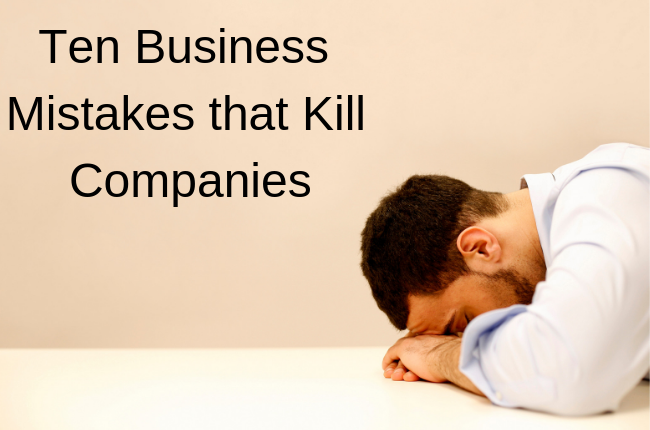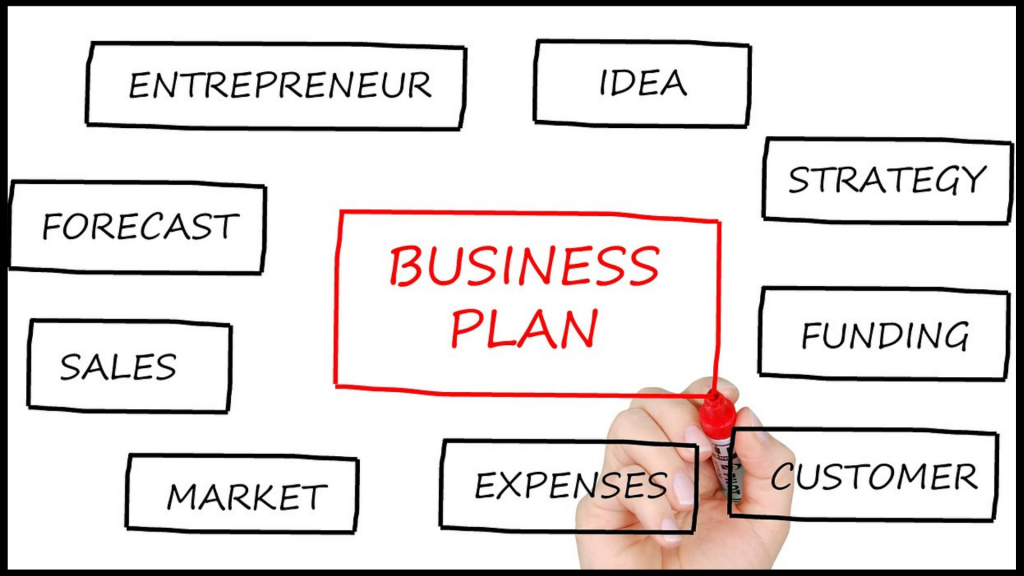About half of all small businesses fail within the first five years.
The U.S Dept. of Commerce tells us that about half of all new employer firms survive five years. The half that don’t survive often fail because of business mistakes caused by their owners.
Each of the errors discussed here has been the cause of business failures, but thankfully there are ways to avoid every one of them.
Poor Cash Flow Management
No matter what a business makes ‘on paper’ it takes real cash to pay the bills. Income and expenditure cash flows don’t often coincide, and there can be times when a business doesn’t have enough cash on hand to meet its commitments.
Ensure the business can always access enough cash to meet regular outflows like salaries, loan repayments and taxes that must be made on predetermined dates. Arrange a source of finance for those times when extra cash is needed.
Ignoring Employee Concerns
 There is a legal framework within which every company operates. Employee concerns about issues such as sexual harassment, safe working conditions or discrimination of any kind have the potential for disaster.
There is a legal framework within which every company operates. Employee concerns about issues such as sexual harassment, safe working conditions or discrimination of any kind have the potential for disaster.
Resolve HR issues without delay, and get expert advice if needed. It might seem expensive, but the cost of ignoring employee concerns can be a lot higher.
Sloppy Recordkeeping
Good records are a useful decision-making tool. Some key records include equipment maintenance histories, personnel information, and details of income and business expenditures.
Without these a small business owner has no way of knowing how the business is performing or what needs attention. Every business needs to keep relevant, timely and accurate records.
Too Much Inventory
Inventory is an expense. It’s a common business mistake to have too much stock on hand. Inventory levels should be high enough to meet anticipated demand, but know suppliers’ lead times and keep stock at minimum levels.
Not Collecting Outstanding Debts
Without a systematic plan for collecting outstanding amounts a business can amass debts that are too old or too expensive to collect.
Successful businesses have a firm credit policy and make sure their customers understand it. Initiate collection efforts as soon as a payment deadline is missed, moving from diplomacy to demands the longer the debt remains unpaid.
Offering What the Market Doesn’t Want
Make sure that the business is offering what the market wants. This is especially critical when developing or considering new product lines. Too many resources can be invested in a ‘loser’ and the company never recovers.
Market research is vital, even if it’s conducted informally. Trade publications, business magazines and even lunches with suppliers and major customers can be sources of valuable market information.
Allowing Costs to Blow Out
Too often the focus is on increasing income and not enough attention is paid to costs. Costs have to be controlled regardless of how much money the business is bringing in.
Successful small businesses know what their costs are and don’t have to tap into profits to meet unexpected expenses.
Being Unwise with Marketing Dollars
Create an integrated and ongoing marketing plan and work to it. Marketing is not successful if it’s done in an unplanned, haphazard fashion.
Have a marketing plan that’s affordable and stick to it. Trying to ‘make a splash’ is a common error that can leave a business with inadequate marketing support the rest of the year.
Not Delegating
 Small business owners can’t and shouldn’t do everything in the company, including making all the decisions. Turn some of the work over to staff members and let them get on with the job.
Small business owners can’t and shouldn’t do everything in the company, including making all the decisions. Turn some of the work over to staff members and let them get on with the job.
It’s an old maxim but a true one – business owners need time to work ON their businesses. If they spend too much time working IN them there’s not going to be enough time directed to developing the business and making it grow.
Not Planning for Emergencies
Every business needs financial resources to keep it going if disaster strikes. This can be a natural disaster, the failure of a key supplier, or some other unforeseen event.
A source of funds should be available that will cover the expenses of staying in business when something happens that stops the company from trading.
The right kind of insurance can provide the money needed to keep a small business going but only if it covers the exact circumstances that have closed the doors.



